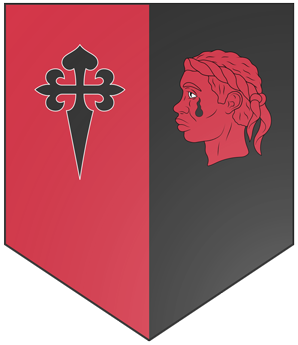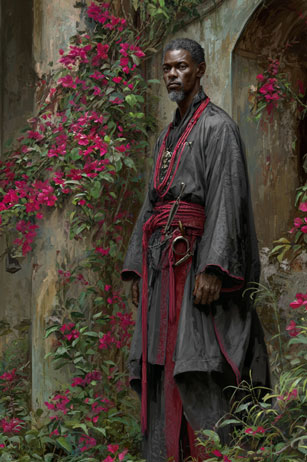Brotherhood of the Lost
Tiala knocked on the holey door of the dilapidated, large house overgrown with undergrowth, reminiscent of an old hospital. Sandile stood beside her, carrying a sleeping, sickly boy in his arms. Light filtered through the cracks in the door, which was barely holding on to its hinges, into the gathering darkness. They heard shuffling footsteps, and Tiala saw a man approaching the door through the holes. The wood creaked as a small window opened. "What do you want?" the man growled, just as grimly as he stared at Tiala. "YOU have no business being HERE! Go away! We don't want people like YOU HERE!" Then he slammed the small window shut and shuffled back inside. "Well..." Tiala grinned: "...then so be it!" She held her hands to the wood until each plank glowed and burned to coals in no time. Then she smiled at Sandile: "Come, the boy needs help. No matter how grumpy the Brotherhood may be, they know best how we can nurse the boy back to health."- Excerpt from the novel -
Historical overview
At a Glance
Name: Jangi tuwobadi - Brotherhood of the LostMotto: Hope glimmers in the shadows.
Coat of arms: Divided in red and black, symbolizing shadows and glimmers. The cross and the tearful head represent the brotherhood and the lost souls.
Founder: Kitwana Kobe
Leader: Moyo Jafari
Hierarchy: Guardian, Prior, Brother
Clothing: Black robe with red hems and rope belt
Goals: Care of sick men, assistance in the search for cures for Spark Enhancer, maintenance of sanatoriums
Timeline
- 7,450 BEC Discovery of spark symbiosis by Tiala of Halibiki
- 7,400 BEC Increased incidence of failed spark symbioses in men
- 6,500 AEC Establishment of the first sanatoriums for male Layikani
- 3,735 AEC Founding of the Jangi tuwobadi by Kitwana Kobe
- 3,689 AEC Promulgation of the most important precepts of the order








It's really nice that they exist, but also kind of sad that they have to.
Explore Etrea | WorldEmber 2025
Yes, unfortunately I have to agree - thank you.
Here are my Entries for the water continent Ulűri̋qi̋